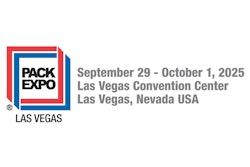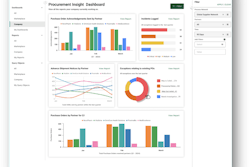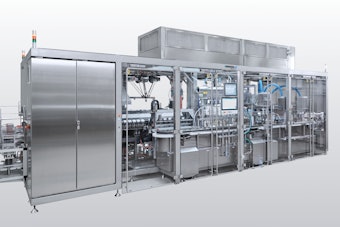Hospital pharmacists face plenty of challenges, with packaging issues among them. In this article, Karl Gumpper addresses some of their concerns. Gumpper is the director of the Section of Pharmacy Informatics and Technology of the American Society of Health-System Pharmacists (ASHP) (www.ashp.org).
ASHP is a 30,000-member national professional association that represents pharmacists who practice in hospitals, health maintenance organizations, long-term care facilities, home care, and other components of health care systems. Assisting pharmacists in helping people make the best use of medicines. is ASHP's primary objective.
Under the heading, "Section of Pharmacy Informatics and Technology," ASHP's Web site explains: "The information technology revolution has fueled the demand in hospitals and health systems for accomplished experts who can help select, implement and maintain [various] systems. As the use of IT in healthcare expands and the complexity of medication therapy increases, there has been a correspondingly rapid growth in the specialty practice of pharmacy informatics."
Gumpper says, "My job here is working with the members who have an interest in technology and automation. Most members within our section are pharmacists whose job increasingly involves automation, with patient safety in mind."
Gumpper believes one area of concern for packaging is pediatric products. "Within pediatrics, [hospital pharmacists] often must manipulate the dosage forms needed to administer to patients. For example, a patient may be able to buy a 5-mL cup or 5-cc version of a medication. In pediatrics, we generally repackage that quantity into a smaller volume because our doses are so different than what the adults take," he says, believing that different size options would be helpful.
Date coding
Another packaging concern, Gumpper says, is the beyond-use dating and whether or not a product is good for six months or 12 months. "I don't think we have a good feel for that right now: It depends on what standard you are using," he says. "If you are using Food and Drug Administration recommendations, it's 12 months, but if you are using standards from the U.S. Pharmacopeia, it's six months from the point of manufacture."
Packaging copy for a well-known antibiotic, Gumpper notes, may indicate that the product inside expires three years from now. "But if it's repackaged into unit-dose packs used by a hospital, the hospital has to give it a new expiration date," he says. "That's part of the problem, depending on whose standards you are following."
Those standards can also vary for liquids or solid-dose pharmaceuticals. Gumpper says there can be uncertainties, depending on whether or not there were stability tests done to show that the drug is stable, and depending on its packaging, be it a plastic or foil wrap, whether it provides light protection, barrier, etc. He says having consistent USP or FDA standards is imperative.
Bar coding and RFID
Gumpper says that as more hospitals adopt bar codes on packaged medications, it would be beneficial if ready-to-dispense packages would each have a date and bar code.
"The whole bar-code matter is always going to be an issue for us," he notes. "When you talk about the bar code, is it the National Drug Code of the product? Is it the lot number and expiration? What's actually contained in that bar code is important, and then a determination must be made as to what type of bar code it is, since there are many different styles and symbologies that can be used at this point."
And what about the use of radio-frequ-ency identifIcation (RFID) on hospital pharmacy packages? "We are not sure how RFID fits in best," says Gumpper. "I think at this point, RFID is probably good for identifying where patients or equipment are located."
Despite RFID's uncertainties, Gumpper believes RFID will be used in the hospital environment. "It's becoming more reasonable, and there are hospitals that are experimenting with RFID," he says.
Robots for hospital pharmacies
Although he has several packaging concerns for hospital pharmacy operations, Gumpper applauds the potential of robotic automation.
"Hospital pharmacies use robots in several ways, including having them fill intravenous liquid preparations into a syringe or IV bag. And the machine can work with lyophilized products, where it reconstitutes the powder and adds it to a bag or syringe. They are pretty expensive, but they are beginning to be used in hospitals."
Typically, he says, such work would have been conducted by a pharmacist or a pharmacy technician, so robotics could reduce labor costs and free hospital pharmacy personnel to address other tasks.
Two manufacturers of these robotic systems, says Gumpper, are Intelligent Hospital Systems (www.intelligenthospitals.com) and ForHealth Technologies (www.forhealthtechnologies.com).
In October, IHS announced that The Children's Hospital of Philadelphia signed a contract to lease the company's RIVA (Robotic Intravenous Automation) system, a self-contained unit for filling IV syringes and bags. [HCP]
By Jim Butschli,
Editor
Read more about pharmacy/prescription at
www.healthcarepackaging.com/go/23
ASHP is a 30,000-member national professional association that represents pharmacists who practice in hospitals, health maintenance organizations, long-term care facilities, home care, and other components of health care systems. Assisting pharmacists in helping people make the best use of medicines. is ASHP's primary objective.
Under the heading, "Section of Pharmacy Informatics and Technology," ASHP's Web site explains: "The information technology revolution has fueled the demand in hospitals and health systems for accomplished experts who can help select, implement and maintain [various] systems. As the use of IT in healthcare expands and the complexity of medication therapy increases, there has been a correspondingly rapid growth in the specialty practice of pharmacy informatics."
Gumpper says, "My job here is working with the members who have an interest in technology and automation. Most members within our section are pharmacists whose job increasingly involves automation, with patient safety in mind."
Gumpper believes one area of concern for packaging is pediatric products. "Within pediatrics, [hospital pharmacists] often must manipulate the dosage forms needed to administer to patients. For example, a patient may be able to buy a 5-mL cup or 5-cc version of a medication. In pediatrics, we generally repackage that quantity into a smaller volume because our doses are so different than what the adults take," he says, believing that different size options would be helpful.
Date coding
Another packaging concern, Gumpper says, is the beyond-use dating and whether or not a product is good for six months or 12 months. "I don't think we have a good feel for that right now: It depends on what standard you are using," he says. "If you are using Food and Drug Administration recommendations, it's 12 months, but if you are using standards from the U.S. Pharmacopeia, it's six months from the point of manufacture."
Packaging copy for a well-known antibiotic, Gumpper notes, may indicate that the product inside expires three years from now. "But if it's repackaged into unit-dose packs used by a hospital, the hospital has to give it a new expiration date," he says. "That's part of the problem, depending on whose standards you are following."
Those standards can also vary for liquids or solid-dose pharmaceuticals. Gumpper says there can be uncertainties, depending on whether or not there were stability tests done to show that the drug is stable, and depending on its packaging, be it a plastic or foil wrap, whether it provides light protection, barrier, etc. He says having consistent USP or FDA standards is imperative.
Bar coding and RFID
Gumpper says that as more hospitals adopt bar codes on packaged medications, it would be beneficial if ready-to-dispense packages would each have a date and bar code.
"The whole bar-code matter is always going to be an issue for us," he notes. "When you talk about the bar code, is it the National Drug Code of the product? Is it the lot number and expiration? What's actually contained in that bar code is important, and then a determination must be made as to what type of bar code it is, since there are many different styles and symbologies that can be used at this point."
And what about the use of radio-frequ-ency identifIcation (RFID) on hospital pharmacy packages? "We are not sure how RFID fits in best," says Gumpper. "I think at this point, RFID is probably good for identifying where patients or equipment are located."
Despite RFID's uncertainties, Gumpper believes RFID will be used in the hospital environment. "It's becoming more reasonable, and there are hospitals that are experimenting with RFID," he says.
Robots for hospital pharmacies
Although he has several packaging concerns for hospital pharmacy operations, Gumpper applauds the potential of robotic automation.
"Hospital pharmacies use robots in several ways, including having them fill intravenous liquid preparations into a syringe or IV bag. And the machine can work with lyophilized products, where it reconstitutes the powder and adds it to a bag or syringe. They are pretty expensive, but they are beginning to be used in hospitals."
Typically, he says, such work would have been conducted by a pharmacist or a pharmacy technician, so robotics could reduce labor costs and free hospital pharmacy personnel to address other tasks.
Two manufacturers of these robotic systems, says Gumpper, are Intelligent Hospital Systems (www.intelligenthospitals.com) and ForHealth Technologies (www.forhealthtechnologies.com).
In October, IHS announced that The Children's Hospital of Philadelphia signed a contract to lease the company's RIVA (Robotic Intravenous Automation) system, a self-contained unit for filling IV syringes and bags. [HCP]
By Jim Butschli,
Editor
Read more about pharmacy/prescription at
www.healthcarepackaging.com/go/23



















